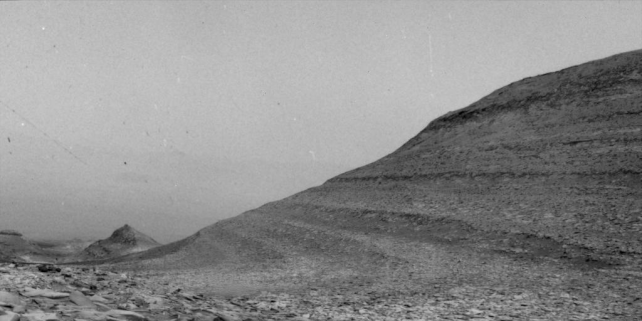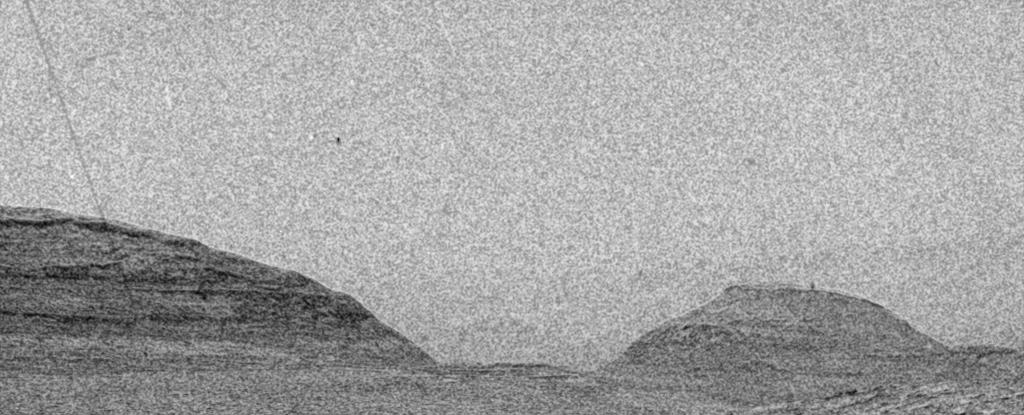In recent weeks, the Sun has become so noisy that the Earth is constantly bombarded with radiation and particles emitted by the explosions of solar plasma.
But Earth is not the only planet affected by solar storms. At only 1.5 times Earth’s distance from the Sun, Mars has also been buffeted by large outflows of particles blasted through the Solar System.
The red planet’s magnetic environment and atmosphere are much weaker than Earth’s, so the effects of solar storms look a little different there. But instruments such as those on orbiting MAVEN have recorded those effects—and now we can analyze that data to understand the radiation environment on Mars and how it might affect future human explorers.
“This was the largest energetic solar particle event that MAVEN has ever seen,” says physicist Christina Lee of the University of California, Berkeley. “There have been several solar events in the past weeks, so we were seeing wave after wave of particles hitting Mars.”

Here on Earth, the biggest effects were seen in early May, when bursts known as coronal mass ejections (CMEs) — large ejections of solar plasma and magnetic fields that sometimes occur in conjunction with solar flares — were hurled our way. .
The result was a spectacular array of auroral colors seen at latitudes not normally known for such sights, as solar particles entangled with Earth’s magnetic field and rained down on Earth’s atmosphere, where interactions with its particles produced a display stunning light.
The sunspot region responsible for those explosions then spun far to the far side of the Sun, but our host star wasn’t done with its rumblings. On May 20, an absolutely massive explosion occurred on the far side of the Sun, an explosion estimated to be in X12, which would place it among the most powerful solar flares ever detected. Soon after, a CME erupted—and Mars was in the firing line.
Light from the explosion came first, bathing Mars in solar X-rays and gamma rays. CME particles travel significantly slower than the speed of light, so they arrived a little later, causing auroras in the Martian atmosphere.
Now, Mars does not have a global magnetic field like Earth does. It does not have the internal operative activity – a dynamo – to produce it. On Earth, the magnetic field accelerates solar particles to the poles, where they fall into the ionosphere. This is why aurora activity is concentrated at higher latitudes.
Because Mars does not have a magnetic field that can do this, the auroras there tend to be global. But there is a catch. The resulting “light shows” are in the ultraviolet – meaning we wouldn’t be able to see them with the naked eye.
Fortunately, we have satellites orbiting the red planet that can. MAVEN has captured the continuous ultraviolet fluctuations in the Martian atmosphere as wave after wave of solar particles crash into it.
Rovers on the surface also measured the radiation flux from the explosion. Earth’s atmosphere blocks most energetic light from reaching the surface, but the volume of the atmosphere surrounding Mars is less than 1 percent of Earth’s, leaving almost no protection from the Sun’s rays.
frameborder=”0″ allow=”accelerometer; Play automatically; clipboard-write; encrypted media; gyroscope; picture-in-picture; web-share” referrerpolicy=”strict-origin-when-cross-origin” allowfullscreen>
After the giant explosion, Curiosity’s Radiation Assessment Detector recorded a radiation spike of up to 8,100 micrograys — the equivalent of 30 chest X-rays at once and the largest spike recorded by the rover. Such an increase would not be lethal, but it would not be good for one’s health at all.
In fact, Curiosity’s black-and-white images taken during the storm are filled with ‘snow’ – static produced by charged particles interacting with the camera.
The measurement gives scientists working on the development of the Mars mission a key data point for understanding what kind of radiation environment the explorers might enter, which could help design strategies to avoid or protect themselves from the waves. .
“House rocks or lava tubes would provide additional protection for an astronaut from such an event. In Martian orbit or in deep space, the dose rate would be significantly greater,” says physicist Don Hassler of the Institute. Southwest Research.
Meanwhile, as we enter the most active phase of the solar cycle, even more storms are forecast. Hassler adds: “I wouldn’t be surprised if this active region on the Sun continues to erupt, meaning even more solar storms on Earth and Mars in the coming weeks.”
